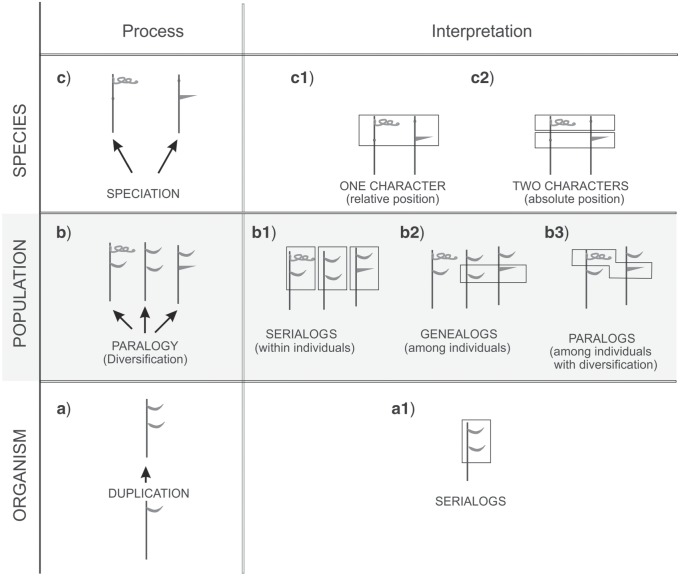Figure 4.
Theoretical outline of a paralogy assessment. The left column shows how new characters arise through paralogy. The right column gives a survey of the interpretations of structures resulting from multiplication and diversification, in function of the different hierarchical levels. Multiplication of a given structure (in casu duplication of a leaf bearing node) at the organism level (a) results in serialogs (a1) which might diversify into thorns or tendrils at the population level (b). Within a single individual, the repeated structures are serialogs, irrespective of their phenotype (b1, framed). Comparing serialogs with different phenotypes among different individuals results in two possible statements: referring to the same absolute position, structures are genealogs irrespective of their phenotype (b2, framed), referring to different absolute positions, they are paralogs (b3, framed). At the species level, different character states of “leaf” might have been fixed in different individuals (c). When considering the relative position, leaves, tendrils, and thorns are characters states (c1), when considering their absolute positions, they are two characters (c2, each frame contains a character). Symbols:  tendril;
tendril;  thorn;
thorn;  leaf.
leaf.

